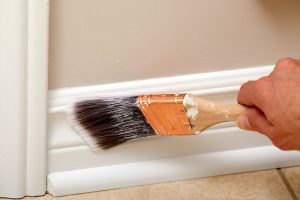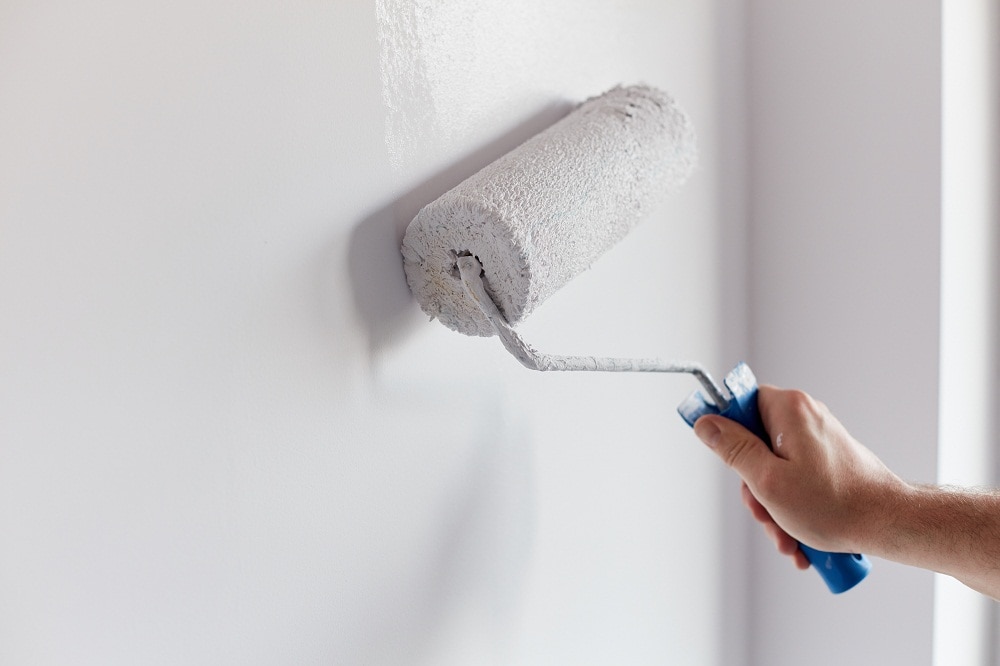Faced with the chicken-and-egg question of whether to paint the walls or trim first? Read on for some advice.
Walls and Trim
Sometimes walls just look plain and ordinary. There are a hundred ways to spruce them up, but if you want your interior to have a bold design statement, adding trim is the way to go. It may be a simple decorative treatment, but it can transform the look of any space. It’s also a practical solution for hiding joints, gaps, and other flaws on your wall.
When changing wall and trim colors, homeowners typically want to know which part to paint first. They’re worried about splattering pigment and having to do several touch-ups to get the job right.
What to Paint First
The truth is, there’s no definitive answer. Different situations call for different painting sequences. Choosing to work on the wall or the trim first is more of a personal preference than a right or wrong decision.
Starting with the Wall
For inexperienced painters, it’s best to start with the larger sections since painting the trim requires more detailed work. It’s harder to touch up finished molding than a freshly colored wall. You can also just bring the color up to the trim with a roller; then, cut in. Use a smaller brush to cover hard-to-reach areas like corners and crevices.
Coating the wall first also gives you near-instant gratification. After finishing that large area, the room transformation becomes noticeable. You may only be halfway done, but your space already feels different. Seeing the result can be so satisfying that you’ll be more motivated to finish the rest of the job.
Starting with the Trim
Many professionals start with the trim. They prefer to do the longer, more detailed work first; then, focus on the bigger areas after. They find it easier to just cover the edges of baseboards and molding with a painter’s tape once they’re dry, and then continue finishing the wall. It’s time-consuming if you do it the other way around.
Some people also find it easier to cut in over flat, wide surfaces than curved, creased ones. So, after coating the trim, they use a small brush to paint straight edges on the wall, before proceeding to color the rest of it. This technique is best if you have a steady hand and can spare the time.
Tips on Doing It Properly
 Even if you’ve hired a painter, it’s essential for you to learn about some of the best practices of professional contractors. They’re particularly useful when supervising the crew’s work. Knowing that they’re doing the right thing will give you confidence that your new interior will turn out great.
Even if you’ve hired a painter, it’s essential for you to learn about some of the best practices of professional contractors. They’re particularly useful when supervising the crew’s work. Knowing that they’re doing the right thing will give you confidence that your new interior will turn out great.
- A painter should use a brush for the trim and for cutting in walls. Meanwhile, rollers should cover bigger surfaces.
- High-quality painter’s tape is an essential tool for creating straight lines. Make sure your contractor is using some when doing the edgework.
- The paint should be dry before applying tape to it.
- The paint should also be completely dry when removing the adhesive, or it’ll peel off the freshly applied pigment.
- A painter should always start from the top of the wall or trim piece; then, work their way down to avoid drip problems.
Hire a professional to take on the job. Get in touch with Fillo Painting to have a team of experts that does interior painting in Roswell.

